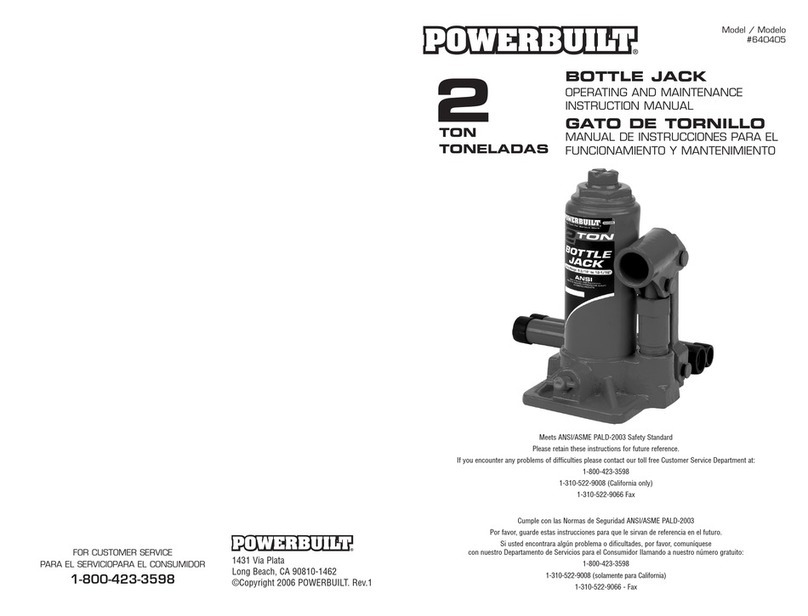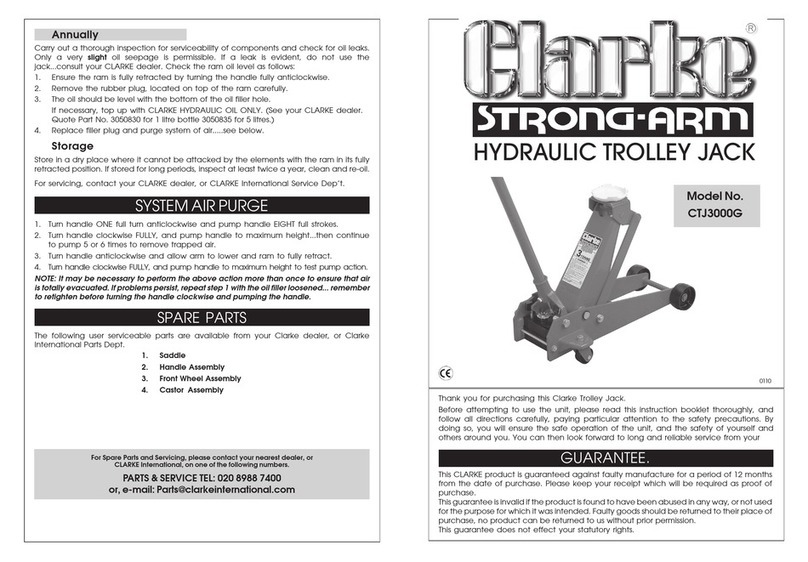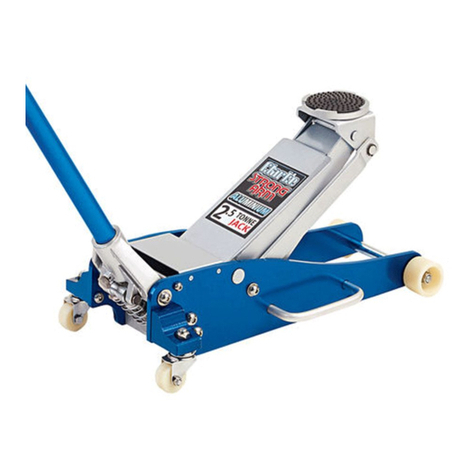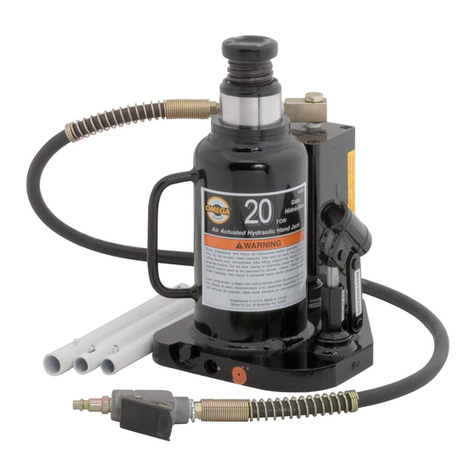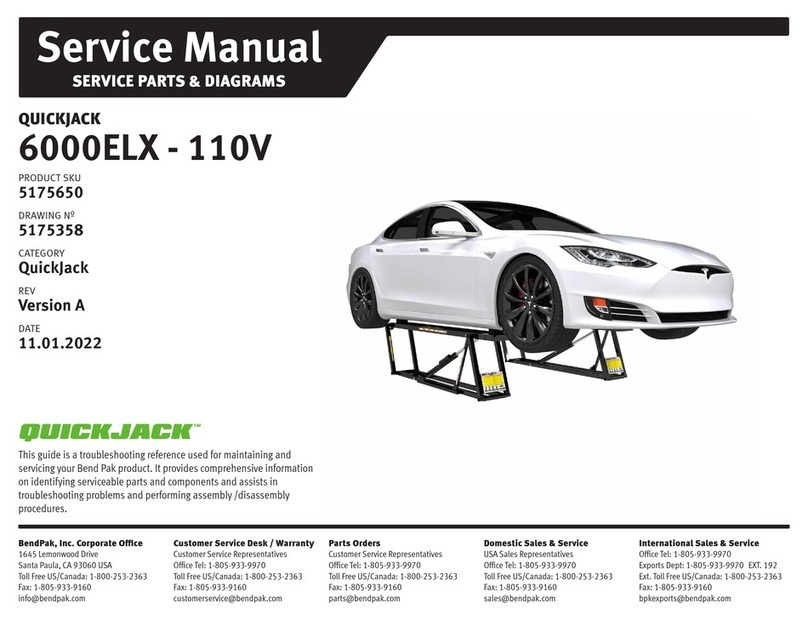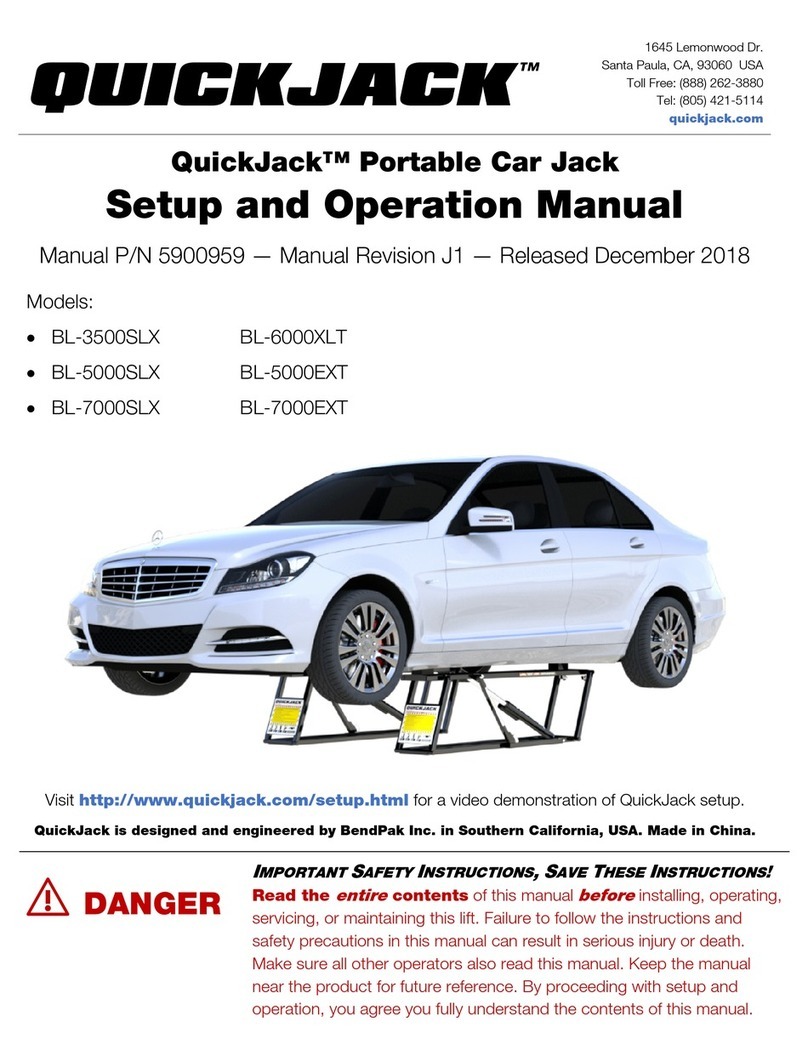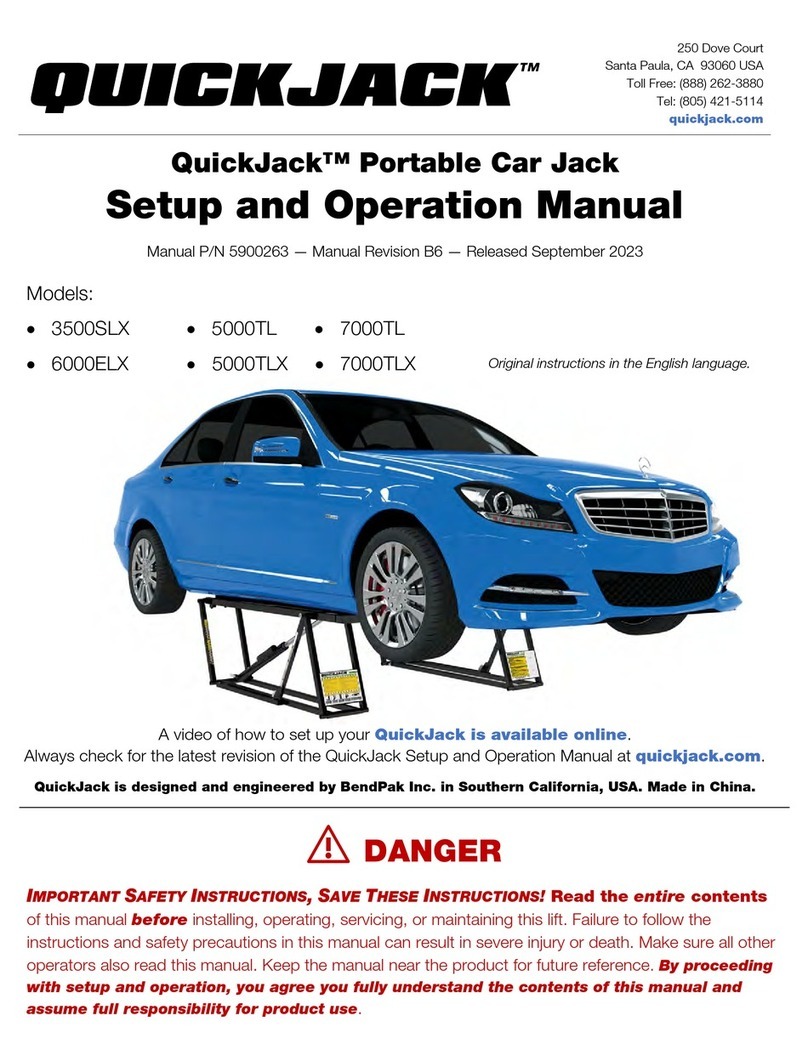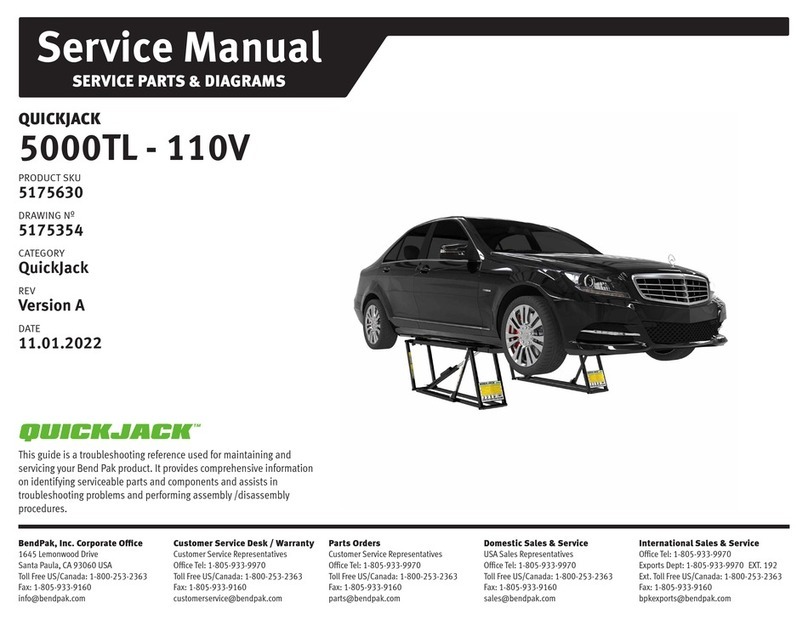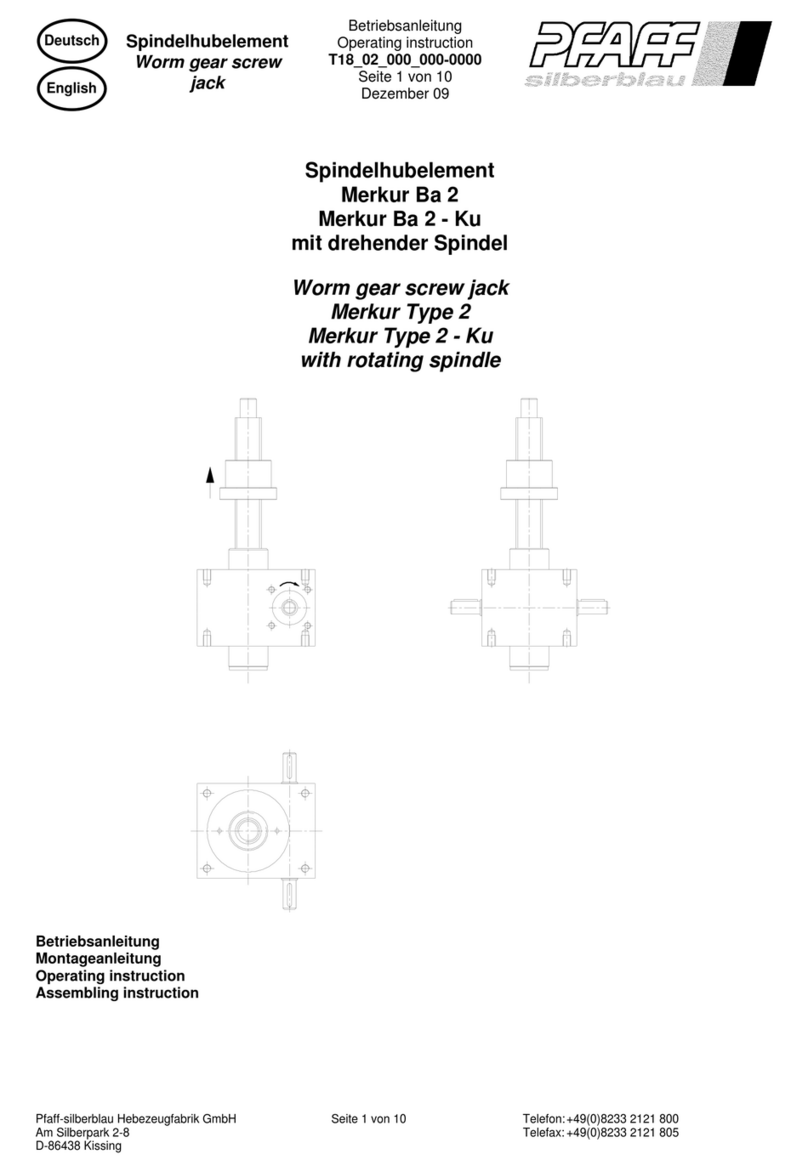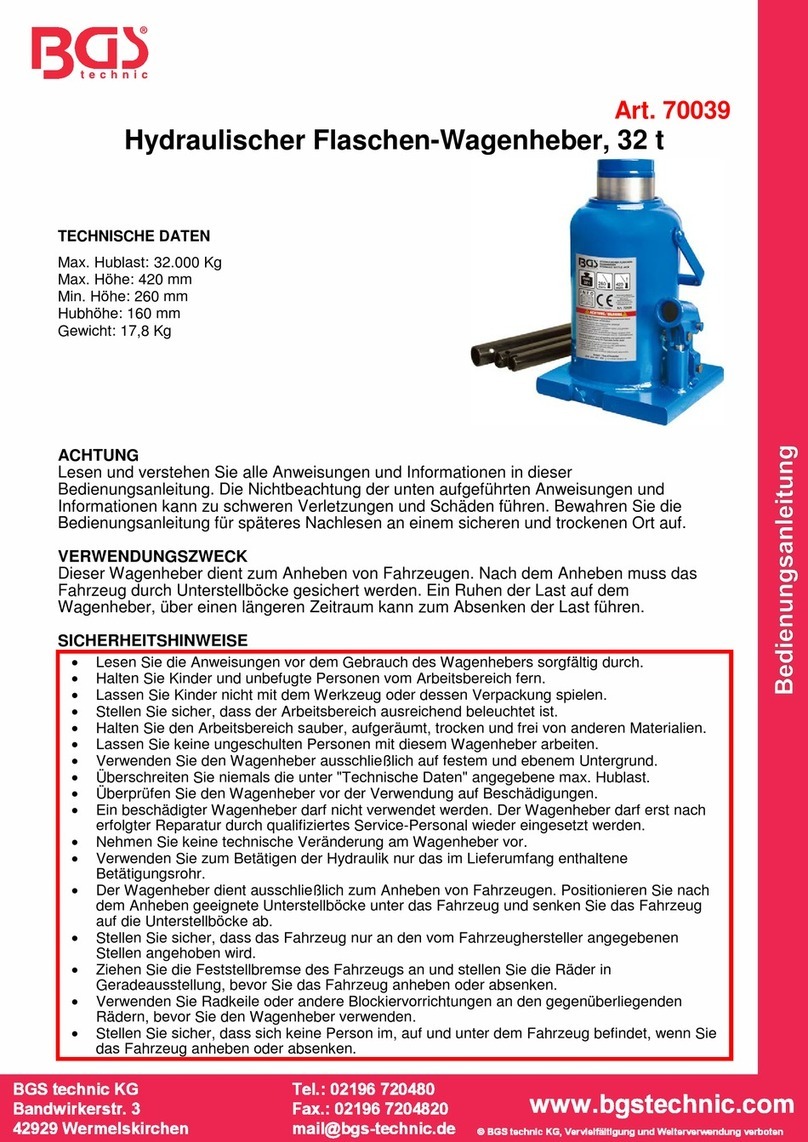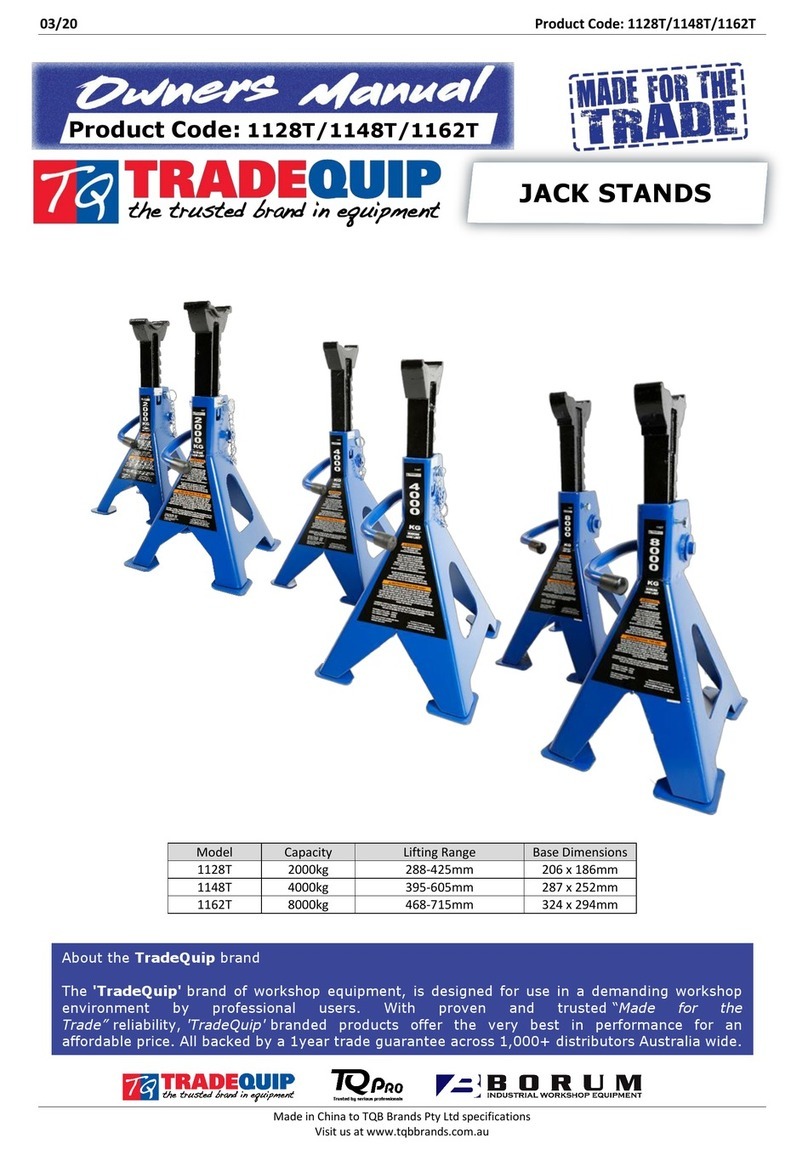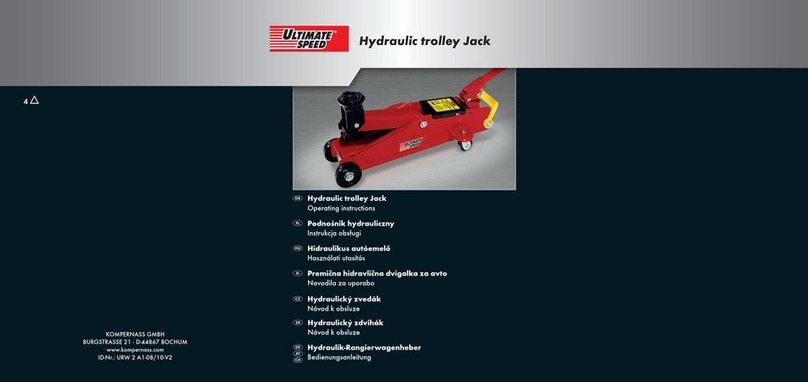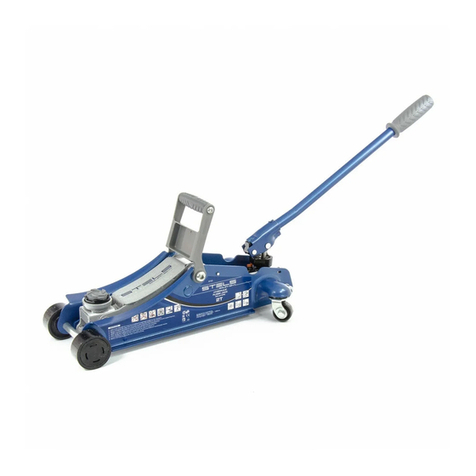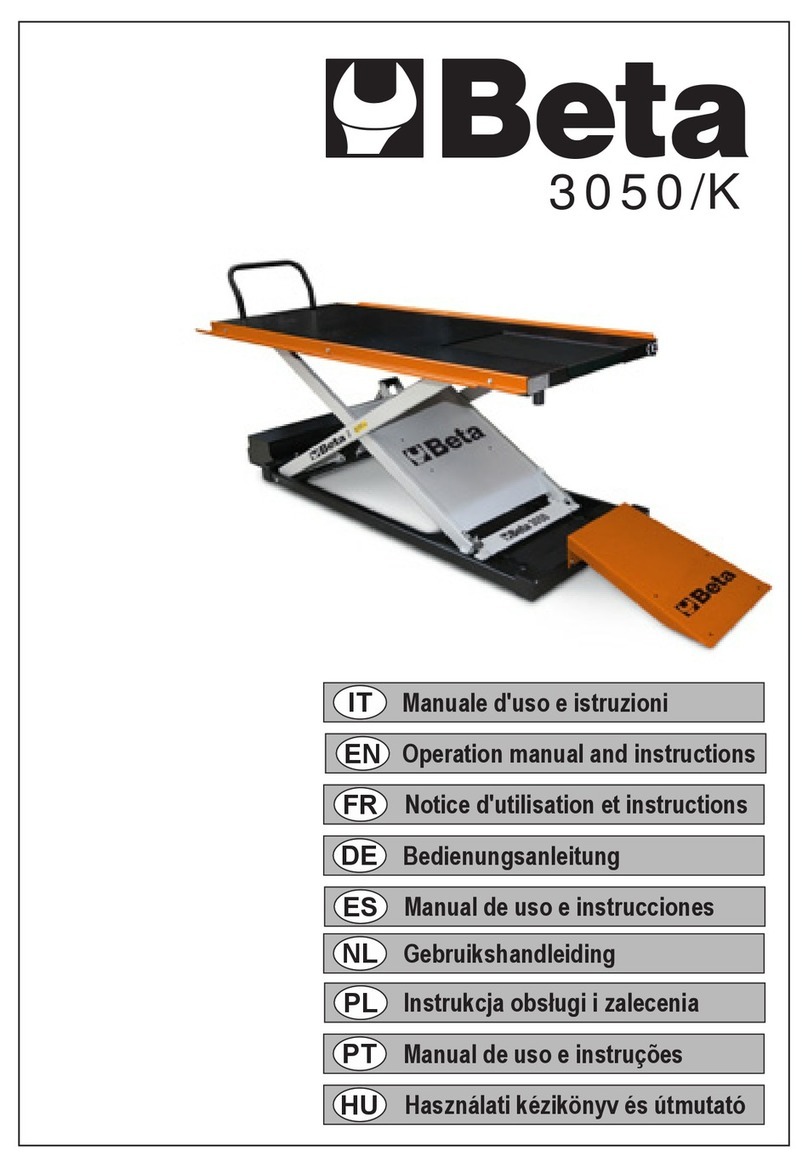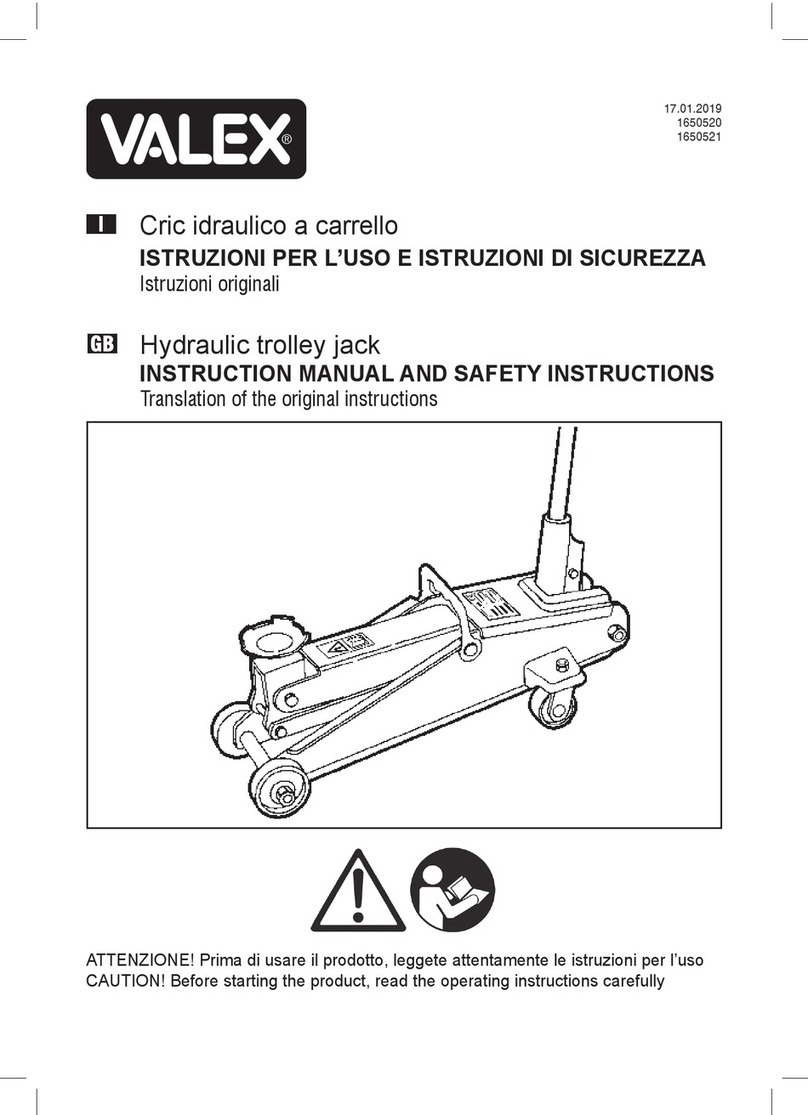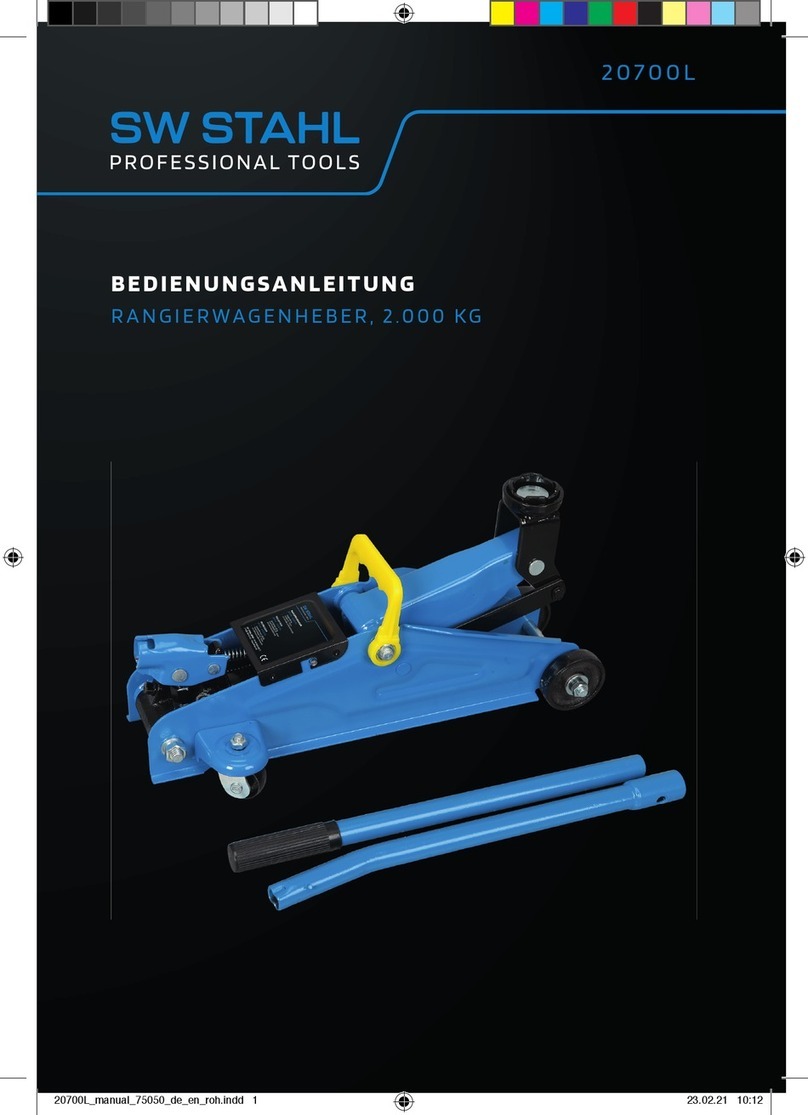
5
Stay clear of any moving parts that can fall and cause injury.
These instructions must be followed to insure proper instal-
lation and operation of your jack. Failure to comply with
these instructions can result in serious bodily harm and void
product warranty. Manufacturer will assume no liability for
loss or damage of any kind, expressed or implied resulting
from improper installation or use of this product.
DEFINITIONS OF
HAZARD LEVELS
Identify the hazard levels used in this manual with the
following definitions and signal words:
Watch for this symbol as it means: Immediate hazards
which will result in severe personal injury or death.
Watch for this symbol as it means: Hazards or unsafe
practices which could result in severe personal
injury or death.
Watch for this symbol as it means: Hazards or unsafe
practices which may result in minor personal injury,
product or property damage.
OWNER’S RESPONSIBILITY
To maintain the jack and user safety, the responsibility of
the owner is to read and understand these instructions:
t Follow all installation and operation instructions.
t Make sure installation conforms to all applicable Local,
State, and Federal Codes, Rules, and Regulations;
such as State and Federal OSHA Regulations and
Electrical Codes.
t Carefully check the product for correct initial function.
t Read and follow the safety instructions. Keep them
readily available for machine operators.
t Make certain all operators are properly trained, know
how to safely and correctly operate the unit, and are
properly supervised.
t Allow unit operation only with all parts in place and
operating safely.
t Carefully inspect the unit on a regular basis and
perform all maintenance as required.
t Service and maintain the unit only with authorized or
approved replacement parts.
t Keep all instructions permanently with the unit and
all decals on the unit clean and visible.
INSTALLER / OPERATOR
PLEASE READ AND FULLY
UNDERSTAND. BY PROCEEDING YOU
AGREE TO THE FOLLOWING:
t I have visually inspected the site where the jack is to
be installed and verified the concrete to be in good
condition and free of cracks or other defects. I understand
that installing a jack on cracked or defective concrete could
cause jack failure resulting in personal injury or death.
t I understand that a level floor is required for proper
installation and level lifting.
t I understand that I am responsible if my floor is of
questionable slope and that I will be responsible for all
charges related to pouring a new level concrete slab if
required and any charges.
t I will assume full responsibility for the concrete floor
and condition thereof, now or later, where the above
equipment model is to be installed. Failure to follow
Danger, Warning, and Caution instructions may lead to
serious personal injury or death to operator or bystander
or damage to property.
BEFORE YOU BEGIN
RECEIVING YOUR SHIPMENT
The shipment should be thoroughly inspected as soon as it
is received. The signed bill of lading is acknowledgement by
the carrier of receipt in good condition of shipment covered
by your invoice. If any of the goods called for on the bill of
lading are shorted or damaged, do not accept them until the
carrier makes a notation on the freight bill of the shorted or
damaged goods. NOTIFY THE CARRIER AT ONCE if
any hidden loss or damage is discovered after receipt and
request the carrier to make an inspection.
IT IS DIFFICULT TO COLLECT FOR LOSS OR DAMAGE
AFTER YOU HAVE GIVEN THE CARRIER A CLEAR
RECEIPT. File your claim with the carrier promptly. Support
your claim with copies of the bill of lading, freight bill,
invoice, and photographs, if available.
IMPORTANT NOTICE

